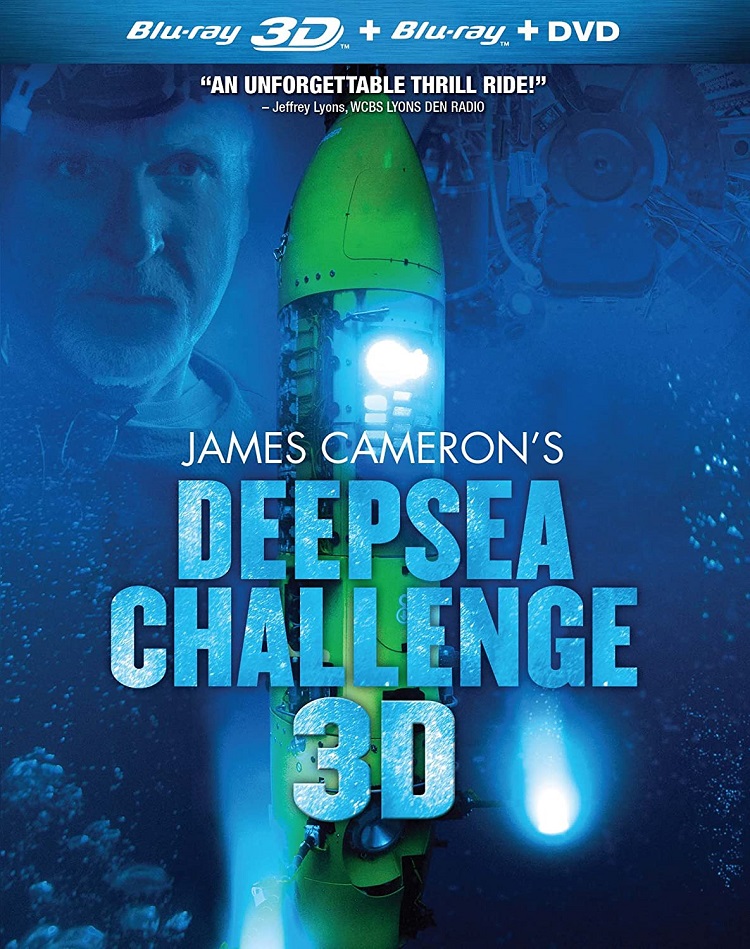
I watched Deepsea Challenge 3D a few nights ago (though decidedly in 2D as I lack the necessary equipment for that elusive third dimension), but it wasn’t until last night that I really developed an appreciation for what James Cameron endured to make this piece of work. He crammed himself into a steel sphere only a few feet in diameter and plummeted to the bottom of the deepest parts of the ocean for the sake of curiosity and scientific discovery. What could I have possibly done to compare to this task? I crammed myself into the tiny space under my kitchen sink to try to replace a faucet. Granted, I had significantly less than seven vertical miles of water weighing down on me, but the cozy quarters still cued a tinge of claustrophobia.
What brings a man to want to go to the hardest to reach places on Earth? Boyhood dreams, sense of accomplishment, being the first to go there, and so on are the usual suspects, and all of those apply to Cameron. However, while 4,000 people have scaled Everest, only three people have been to Challenger Deep, the deepest part of the Mariana Trench in the Pacific Ocean between Japan and Papua New Guinea. The last team to attempt to touch bottom at over 35,000 feet down did so in January of 1960, could only stay for about 20 minutes, and no one had been back since.
Since he was young, Cameron had a fascination with the oceans. They cover two-thirds of the Earth’s surface, yet we know relatively little about them and have left swathes of that area largely unexplored, particularly the parts hardest to reach with generally available equipment and vessels. The goal was to repeat the Trieste descent, but with a crew of only one — Cameron himself — rather than the pair of divers that went down previously. This required the best and brightest engineers, designers, scientists, and the like to come together to build from scratch the vessel that would be put to the ultimate test. Spoiler alert — they succeeded.
The preparation was not without its troubles on many fronts, from technology to engineering to weather. One thing that didn’t seem to be a huge factor, though, was cost. Cameron’s career devoted to making universally popular science fiction and biopic flicks like Aliens, The Abyss, Avatar, and Titanic certainly helped fund a bit of the costly project. I hear Titanic in particular made a least a few bucks. These filmmaking experiences also gave him the know-how to film underwater and in hazardous situations, as well as how to overcome production and engineering questions few have ever had to try to answer. For example, how do you seal a hatch that has to withstand and repel forces unlike any found anywhere else in the world? Easy, bolt it shut from the outside, trapping Cameron inside with limited life support until rescue efforts can be made should something go awry. That then raises the question of how to man a rescue operation at the deepest parts of the sea. Simple — you don’t. Beyond about 20,000 feet, you’re on your own, and if something goes catastrophically wrong and you can’t drop weight to return to the surface, well, it’s “game over, man.”
It’s a well shot and well produced endeavor that keeps moving at a brisk pace throughout, and the Blu-ray treatment does it many favors in the audio-visual department. Despite being a documentary, it certainly wasn’t lacking in Cameron’s flair for excitement and drama. It did leave a big question relatively unaddressed unless I somehow missed it. How did they get all the fantastic exterior shots of the sub from a hundred or more feet away at the bottom of the trench? The story paints a picture of utter solitude under the sea. No divers could survive those depths outside the sub, and there was no mention of dropping other automated lander craft with cameras mounted. The cameras attached to the sub were only a foot or two away, so they wouldn’t have grabbed these shots. Could have been CGI for all I know, but if that’s the case, it kind of spoils the illusion of actually having been there. I checked out the whole five minutes of special features hoping to find more on the making-of, but it was primarily promotional material, not behind-the-scenes footage. I wanted something akin to how the BBC Earth documentaries really dissect how they got some of the amazing footage they did.
If you’ve ever dreamed big or wanted to see what the deepest, darkest crack in the world looks like up close and personal, Deepsea Challenge 3D is worth checking out. The science, hard work, creativity, commitment, and willingness to put it all on the line are inspiring to watch. Given how inhospitable the conditions are in Poseidon’s rocking chair, there’s not a ton to see here once down there, so this trip is definitely more about the journey than the destination, though it’s awesome to see the team reach their goal against long odds.